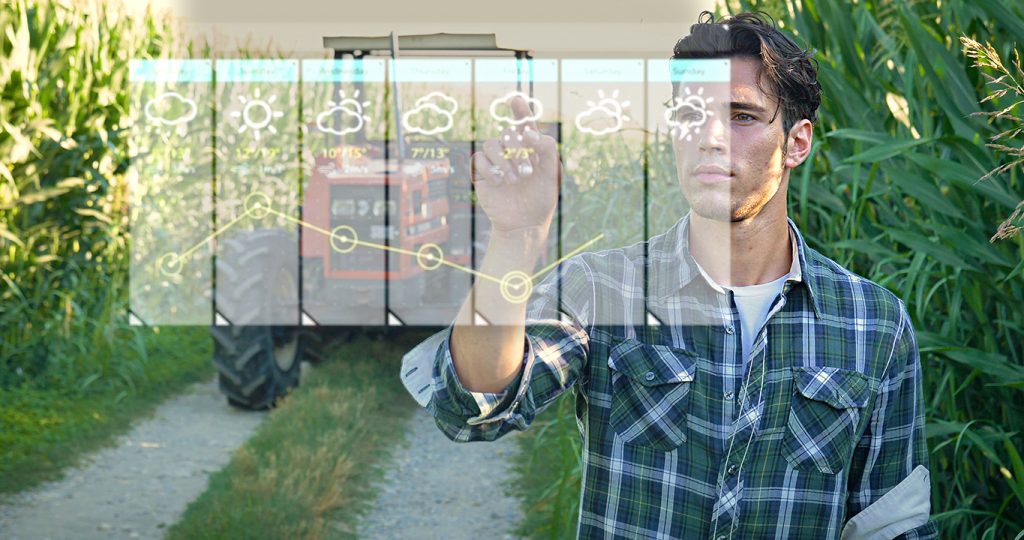Embracing technology does not come easily to all farmers, and Ed Kasper sees a business opportunity in that reality. Kasper, a farmer and precision ag equipment dealer in northern Illinois, is preparing to offer custom planting services in his area. He figures he can share the benefits of new planter technology with farmers who aren’t ready or able to purchase the technology themselves.
Those benefits? With planting technologies improving by leaps and bounds in recent years, the discussion revolves primarily around higher yields.
- The latest variable-rate seed meters put seed in the ground at different rates depending on field conditions. This allows a farmer to use just the right amount of seed – not planting too little in fertile ground or too much in soil that doesn’t produce as well. The result? Higher yields and less waste.
- Down-pressure technologies use electronic sensors and hydraulic cylinders to keep the planter in constant contact with the ground so that seeds are planted at an optimal depth. Planting seeds too close to the surface or too deep can dramatically reduce yields.
- Another technology controls seed movement from the planter to the ground so that seeds are planted one at a time with equal spacing. Rather than planting at a traditional 4 or 5 mph, a farmer can plant at up to 10 mph while maintaining proper spacing of seed, which can significantly boost yields.
Another important benefit of new planter technologies is that farmers can plant more acres during the all-important planting window. Farms are becoming larger, and that means producers feel more pressure than ever to plant when it’s exactly the right time to get seed in the ground.
Farmers are adopting new planter technology in two ways. Some – particularly those with larger operations – are buying new planters, which can cost hundreds of thousands of dollars. Others are retrofitting existing planters with new technology, which can mean investing $50,000 to $100,000.
Doug Griffin, Principal at The Context Network, notes that operators of large farms can easily see the payoff when they spend that amount of money. Those with smaller operations must look much more carefully at potential expenditures, particularly with today’s lower commodity prices. They may be cash-constrained or nervous about using new technology. In addition, they might be stretching out the life of their equipment so they can invest available cash in more land.
“Any capital investment a farmer makes is always carefully scrutinized,” Griffin says. “And as long as commodity prices stay low, farmers are reluctant to make big investments in technology – but by not using new planter technologies, they’re giving up yield.”

The ever-present tension between investment and yield creates the niche for custom planting. A custom planter could serve farmers who won’t use the technology, can’t afford the technology, or don’t know how to use the technology. The business model would not be new; other custom for-hire services are common in agriculture. “If you hire someone else to spray, why not hire someone else to plant?” Griffin asks.
He notes that any move into custom planting would need to start with building the business case around the concept, considering the risks, benefits, and payback of such an operation. Risks and rewards will vary from location to location.
Brett Peelen, a farmer and precision agriculture technician in northwest Iowa, agrees. The biggest question, he says, is “Does it pencil out?”
He says custom planting rates in his area would make such a venture dicey. “The math doesn’t work out here yet,” he says. “The challenge will be finding that good operator … and finding the acres … I see it more as a way for a farmer to get extra income and bring a kid back home to the farm.”
Across the border in Illinois, Kasper has meticulously counted the acres he would need to make a go of it in his area. He’s also looked carefully at how many acres he can fit into a shrinking planting window. In his area, near Lake Michigan, the planting window in the past was two weeks; today, because of changing weather patterns, it’s closer to nine days. To make a custom planting operation work, he would focus first on farmers to his south, where the planting window opens earlier, and then “follow Mother Nature” north.
Griffin says all farmers are from Missouri – the Show Me State – when it comes to changes in farming operations. He suggests they test custom planting – for example, for one year or on 100 acres – to see the improved technology results for themselves. “Let the customers experience the difference for themselves,” says Griffin.
Kasper says he understands farmers’ caution. Planting is the foundation for a farmer’s operations that year; everything else is built upon it. “Your corn planter is the lead engine of your train of consequences,” he says. “If your planter screws it up, your train goes off the track.”
Education is key to growing the market. Griffin says: “If I were an equipment dealer, I would be talking to my coop or ag retailer about the concept. If I were a coop, or retailer, I would be talking to my customers about improving yields with new planter technology. Equipment dealers must help educate retailers and coops that could use this, and coops must educate their customers.”
“This is an opportunity for equipment dealers and retailers to add value,” he says. They can offer a service that no one else offers and provides an opportunity to solve a pain point for a customer that otherwise would not have accessed the technology.
Kasper says that once you educate growers about the benefits of new technology, they’ll want it. Peelen agrees. “It’s an exciting time to be in precision ag. If you can get a guy in the cab to see what the planter does, it will win him over. That’s going to make this market explode.”
Kasper is betting his Iowa counterpart is right. “We’re going to start the ball rolling,” he says. “My philosophy is to always say yes if there’s an opportunity.”
Context has many years of experience in helping organizations in the equipment industry identify and execute go-to-market strategies that address customer needs in changing economic environments. Through deep business knowledge and a broad network of growers, dealers, and experts, Context can glean current market information to gain an understanding of what expectations exist in the particular market cycle.
For more information, contact Doug Griffin at doug.griffin@contextnet.com.



